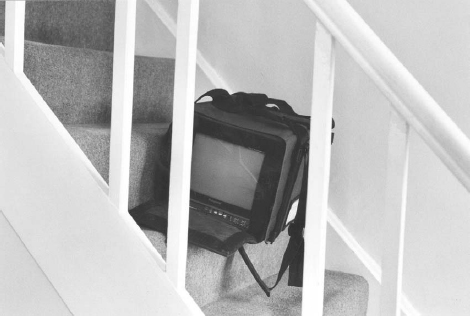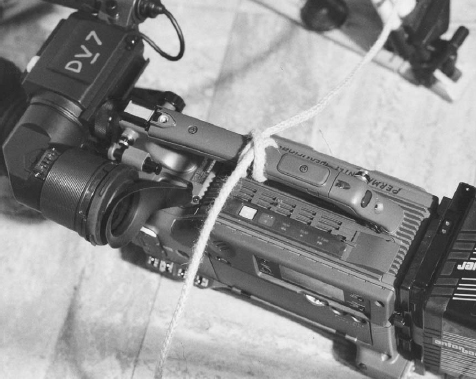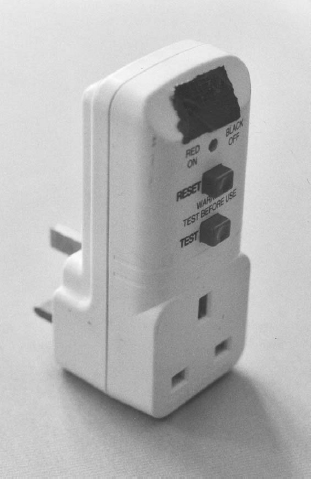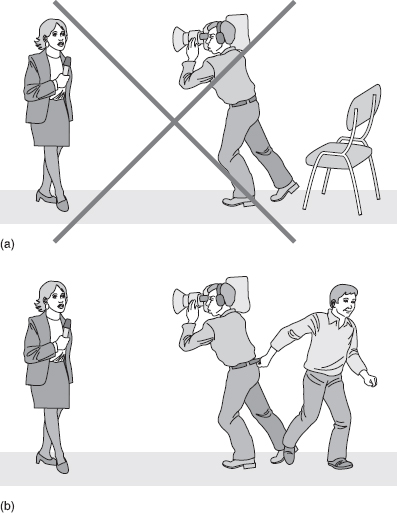First aid
Everyone who works on location should be familiar with basic first aid. Most employers will send staff on first aid courses at their request, and for freelancers it's worth checking if courses and/or funding are available via professional bodies (see Appendix A).
High sound levels
One hazard which can be cumulative is exposure to excess levels of sound, especially whilst wearing headphones and working in noisy environments. It is all too easy to overlook, but could well lead to a diminution of your hearing sensitivity if allowed to develop. Check the level you're feeding to your headphones, and whether the volume control is always set to maximum. If in doubt, ask a colleague if they think your monitoring level is excessive, and seek medical advice if any doubt lingers.
Accident
If the worst should occur, make sure you have a contingency plan. After administering first aid and alerting the emergency services if necessary, the contact information from the call sheet is vital. In this day and age, no crew should be without a mobile phone.
Pre-location planning
Carefully read and check items on the call sheet. There should be a copy of the hazard or risk assessment form regarding the location/s, or at minimum a note of such items from it that pertain to the crew.
If you are available to recce a location – ensure you list possible hazards and provisions made to address them, for example:
![]() construction site – hard hat
construction site – hard hat
![]() chemicals – goggles and other protective clothing?
chemicals – goggles and other protective clothing?
![]() water – self-inflating lifejackets
water – self-inflating lifejackets
![]() hospital – batteries, do not use lighting stands or cables
hospital – batteries, do not use lighting stands or cables
Ensure that responsibility for providing the necessary protection is clearly stated.
Weather – note forecast – but always include provision for inclement conditions.
Facilities – how close/accessible are parking, toilets, food, drink, accommodation?
For a fuller account of planning procedures, etc. see Section 38, Call sheet details.
Rigging
Do not place items in a dangerous position (temporarily resting unsecured on a ledge, steps or stairs, for example, Figure 16.1), and take care when manoeuvring them into confined spaces. If working at height, ensure the stability of the structure (e.g. scaffolding, towers, etc.) together with the proper placement of kicking boards, safety rails, etc. Do not carry equipment up and down ladders, but with a second person supervising, raise and lower it tied to a suitable length of rope – a clove hitch (Figure 16.2) is an invaluable knot to learn. If the equipment is heavy, raise or lower it via a pulley and/or hoist.
Handling and carrying
If equipment is an awkward shape, and/or heavy and bulky, do not strain yourself by attempting to move it unaided. Always seek trained/experienced help when necessary.
Electrical
Most location equipment is designed to run on batteries, but if you do have to plug in to the mains, use an RCD (Figure 16.3), or equivalent safety device to protect circuitry from equipment failure. Beware that others on site may often plug their equipment (which you cannot always check for safety beforehand) into your socket/s.

Figure 16.1 Do not temporarily place items in unsafe positions (such as this monitor in danger of over-balancing on stairs)

Figure 16.2 Rope tied in clove hitch to camera carrying handle
Cables
Care must be taken when laying cables around a location. This usually entails gaffer taping them in place, especially in areas to which the public have access. If there's even a small gap with cable showing, someone's bound to catch their toe or heel in it, and either injure themselves, or pull over a piece of equipment, thus endangering others (not to mention damaging said equipment). To cover several cables, use rubber matting, and gaffer tape along the edges for best protection.
Do not run cables across an emergency exit under any circumstances, but sling or secure them over it if this is their only possible routing.
On exteriors, special cable ramps/guards may be necessary/mandatory (especially if crossing a traffic route/road). Firmly encase any cable connections in waterproof covers for additional protection, and do not lay them in crevices, gullies etc. which are likely to become waterlogged in the event of rain.
Shooting
Clean/disinfect earpieces
A sound recordist is often asked to supply earpieces for contributors, so ensure you carry disinfectant wipes to clean them. I have suffered from an ear infection myself through using an earpiece, and I can assure you it's an extremely painful experience. Most chemists sell antiseptic cleaning wipes (which can also be used to give your hands a quick wipe when someone turns up on location with a quick snack for the crew!).

Figure 16.3 RCD, always use this when plugging equipment into a mains supply
It's a wrap
The most dangerous time on location is often during the de-rig, at the end of a working day when people are tired, and in a hurry to get away. Do not rush, and do not let others pressurize you into doing so (for example, with claims that a building has to close in five minutes, and the doors will be locked, etc.).
Personal comfort
Keep warm and dry. If you get too hot, you can always take something off, but if you get cold, it's extremely difficult to warm up. Working on location may often involve remaining motionless for long periods of time, in all conditions. Ensure you have fully waterproof clothing, coat (with hood), over trousers, and footwear to suit the conditions. Carry an extra sweater, plus hat, gloves, etc. and if you're really unsure of what you might face, a complete change of clothing.
Conversely, in hot and sunny conditions, do not leave skin uncovered all day. Beware of exposure to the sun's direct rays, and carry lots of sun tan cream (apply regularly and liberally) and wear a wide-brimmed hat or peaked cap, if practical, together with fully UV protective sun glasses.
Avoid dehydration and a drop in blood sugar level. Keep some ‘emergency rations’ in your vehicle, chewy bars and a bottle of water and/or cartons of fruit juice, if you prefer. But, do not let their presence encourage you to miss or skimp on having proper meals and breaks during the day. Another life-saver is to have a ‘bag of money’, i.e. loose change, available in your vehicle for parking and other vital expenses.
Problems
You will often find that, inevitably, there is never enough time to do everything required by the production, and that you are delayed by the most unlikely and unexpected occurrences beyond everyone's control. To help minimize problems that may arise from unforeseen circumstances, insist on scheduled breaks, as well as meals, as they provide a flexible buffer. They also fulfil another function. Bear in mind that much location equipment is heavy to carry; and operational concentration and physical exertion both contribute to fatigue, which can overcome even the most dedicated professionals. If you reach this stage, pressing on regardless can frequently be counter-productive; and in the worst case scenario could lead to a potential safety hazard being overlooked by any or all of the crew.
At all times
Your actions, and instructions to those working with you, the equipment and its operation, must in no way endanger the public, contributors, your colleagues, or yourself (Figure 16.4).
Insurance
See Section 39, Insurance.

Figure 16.4 (a) Do NOT attempt to undertake this by yourself! (b) Always get a second person to guide you (preferably with one hand in your belt) if one shot demands that operation. Otherwise it's a situation that potentially places you, and everyone else around you, in danger.
